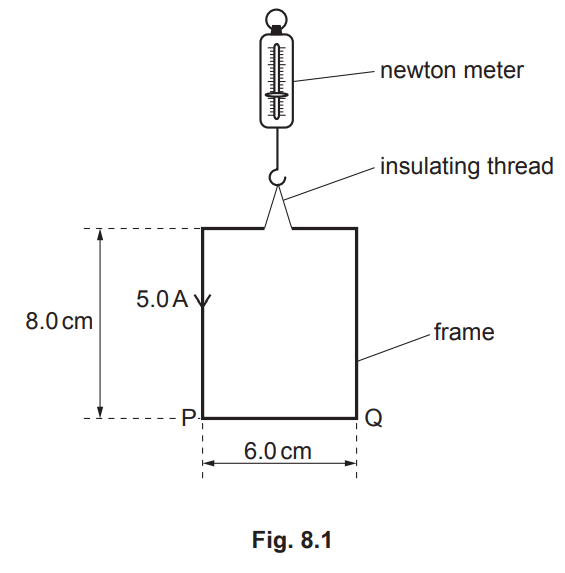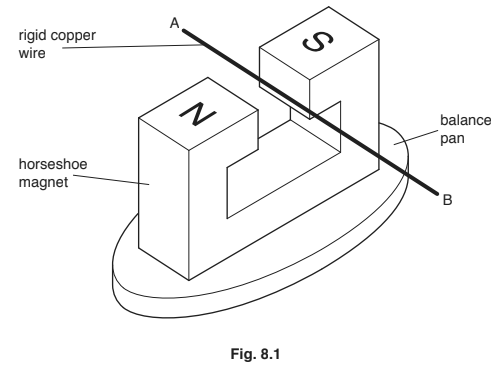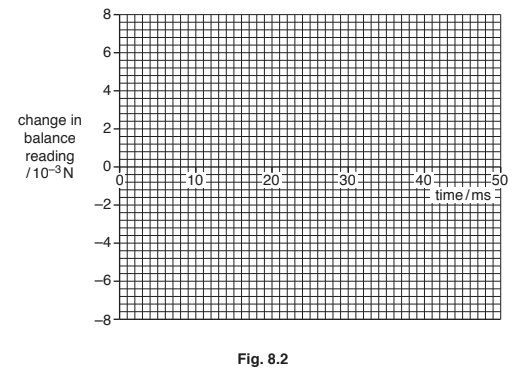Question
(a) Define the tesla. [2]
(b) A stiff metal wire is used to form a rectangular frame measuring \(8.0cm × 6.0cm\). The frame is open at the top, and is suspended from a sensitive newton meter, as shown in Fig. 8.1.

The open ends of the frame are connected to a power supply so that there is a current of 5.0A in the frame in the direction indicated in Fig. 8.1. The frame is slowly lowered into a uniform magnetic field of flux density B so that all of side PQ is in the field. The magnetic field lines are horizontal and at an angle of 50° to PQ, as shown in Fig. 8.2.

When side PQ of the frame first enters the magnetic field, the reading on the newton meter changes by 1.0mN.
(i) Determine the magnetic flux density B, in mT.
B = …………………………………………… mT [2]
(ii) State, with a reason, whether the change in the reading on the newton meter is an increase or a decrease. [1]
(iii) The frame is lowered further so that the vertical sides start to enter the magnetic field.
Suggest what effect this will have on the frame. [1]
[Total: 6]
Answer/Explanation
Ans
(a) newton per ampere per metre
where current/wire is perpendicular to magnetic field
(b) (i) F = BILsin θ
B = 1.0 / (5.0 × 0.060 × sin 50°)
= 4.4 mT
(b) (ii) (from Fleming’s left-hand rule) force on wire is upwards, so reading decreases
Question
A horseshoe magnet is placed on a top pan balance. A rigid copper wire is fixed between the poles of the magnet, as illustrated in Fig. 8.1.

The wire is clamped at ends A and B.
(a) When a direct current is switched on in the wire, the reading on the balance is seen to decrease.
State and explain the direction of:
(i) the force acting on the wire
(ii) the current in the wire.
(b) A direct current of \(4.6\) A in the wire causes the reading on the balance to change by \(4.5 \times 10^{–3}\) N.
The direct current is now replaced by an alternating current of frequency \(40\) Hz and root-mean-square (r.m.s.) value \(4.6\) A.
On the axes of Fig. 8.2, sketch a graph to show the change in balance reading over a time of \(50\) ms.

Answer/Explanation
Ans:
(a) (i) Either Newton’s third law or equal and opposite forces
force on magnet is upwards
so force on wire downwards
(ii) using (Fleming’s) left-hand rule
current from B to A
(b) sinusoidal wave with at least \(1\) cycle
peaks at \(+6.4\) mN and \(–6.4\) mN
